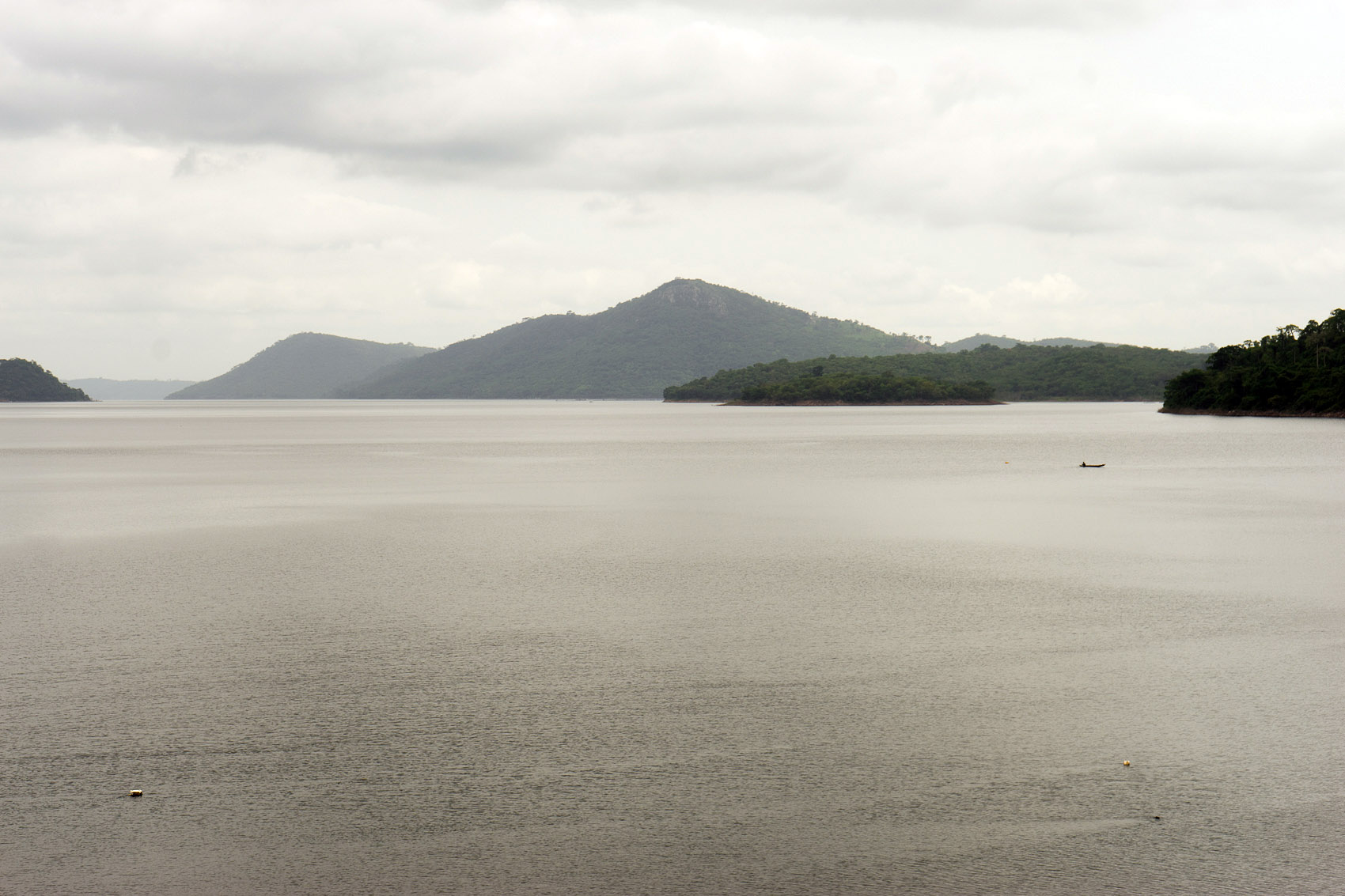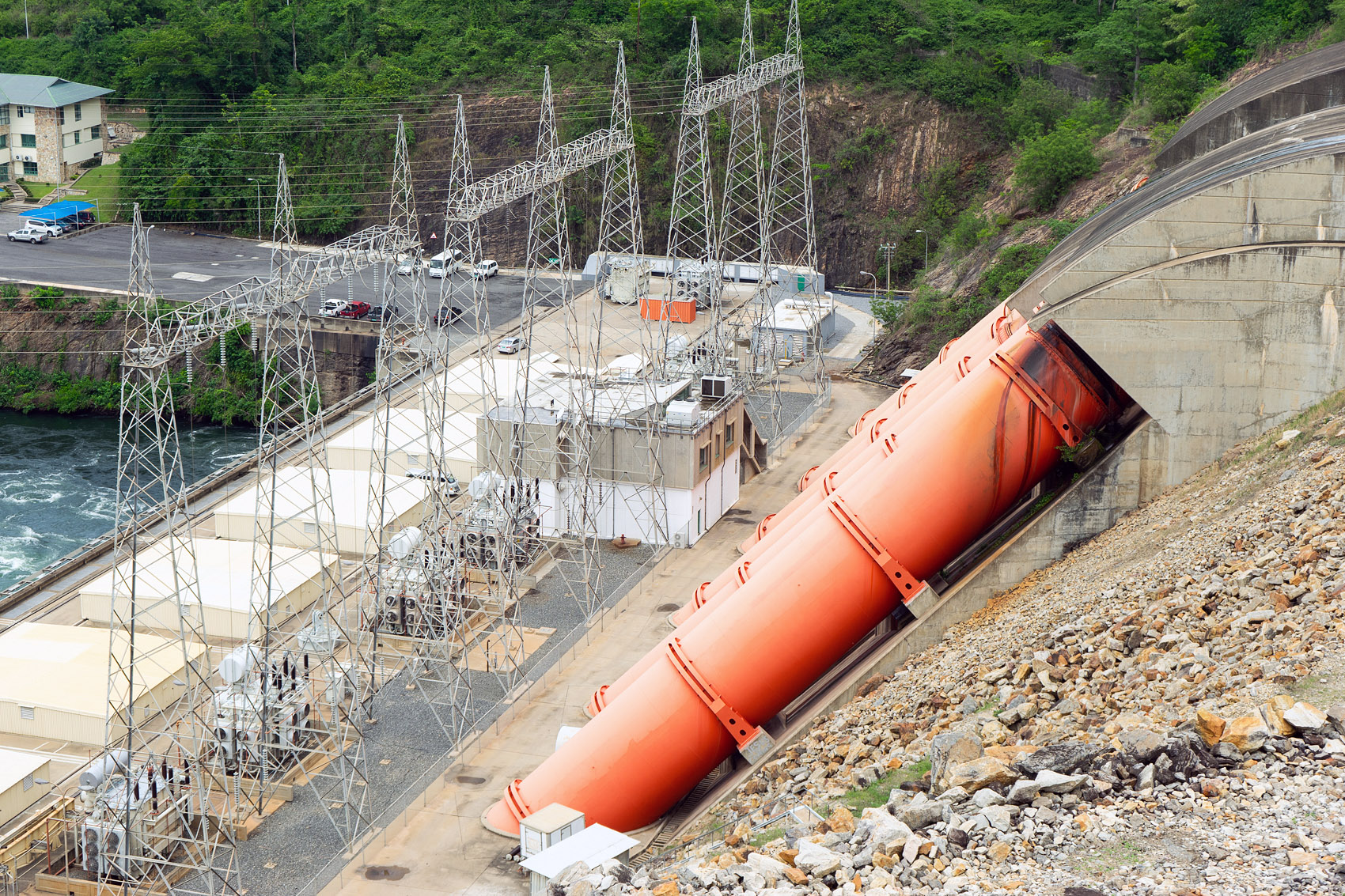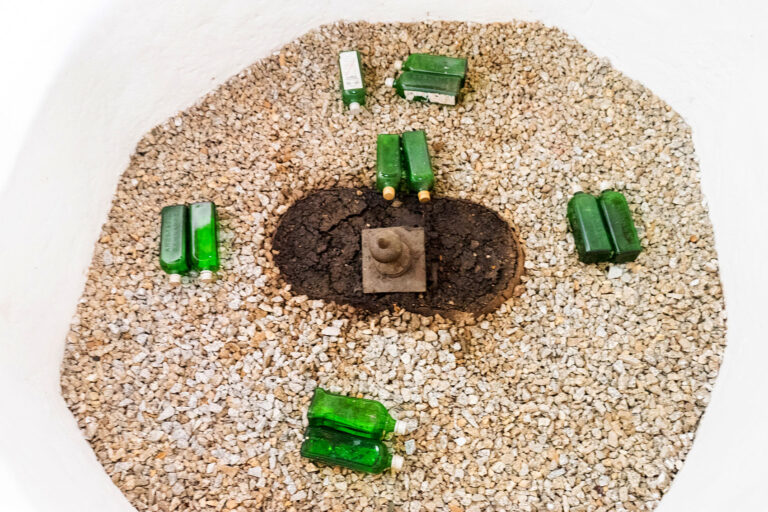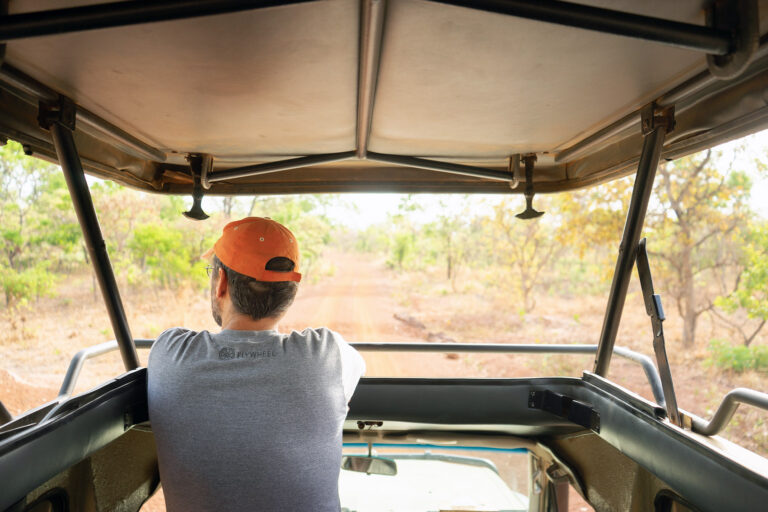The Cost of Akosombo Dam
Our visit to Akosombo Dam was eye-opening. It’s amazing what humans can do when really determined. But it’s equally amazing how careless humans can be about their actions. Creating a massive lake is certainly a formidable achievement! And creating that massive lake without really weighing the potential consequences… well, that’s just human.

Before visiting, we had thought that, sure, constructing the world’s largest reservoir is a dangerous thing. But at least they’re bringing power to the people! Imagine our surprise when we learned that the primary reason for the construction of Akosombo Dam wasn’t to provide citizens with electricity. Nope, the main goal was to supply power to a single aluminum plant, in Tema. And that’s where the majority of it still goes, today. Excess power is sold to the neighboring countries of Benin and Togo, leaving the people of Ghana with a small percentage for themselves.
The dam was constructed between 1961 and 1965, forming the mammoth Lake Volta in the process. 80,000 people were displaced from their homes, and relocated to makeshift communities around the new lake’s perimeter. These were mostly farming communities, which had for untold generations lived and worked upon the fertile soil of the river valley: their home and ancestral birthright. Now, however, they were moved to higher ground where the soil was completely different, and not nearly as good. Their cemeteries and homes were lost, and a huge portion of their historical identity wiped out. All for the benefit of an American aluminum company’s profits.
Disease has taken root around the lake, particularly the horrifying bilharzia, caused by parasitic worms that have thrived in the artificial environment. The lake is also a hotbed of malaria, thanks to the pristine conditions for mosquitoes. Tragically, AIDS has had a severe impact on the region, as well, with the prevalence of prostitution — a huge influx in mostly male construction workers brought a permanent presence of sex labor. There have also been reports of child slavery on Lake Volta, as fishermen “purchase” children from desperate families, to partake in dangerous diving expeditions.

If you know this history in advance, visiting Akosombo Dam can be bittersweet. It seems questionable whether we should ever create such massive dams, which destroy the work nature has spent millions of years perfecting. Of course, that discussion is out of scope for our little travel blog, but a quick jaunt around Wikipedia seems to confirm that every large-scale dam has had disastrous effects on its local ecology.
Still, it’s hard not to feel a lot of awe, and even a little shame-laced pride when looking upon Akosombo Dam. The things we humans can do are amazing … even if we shouldn’t do them at all.



